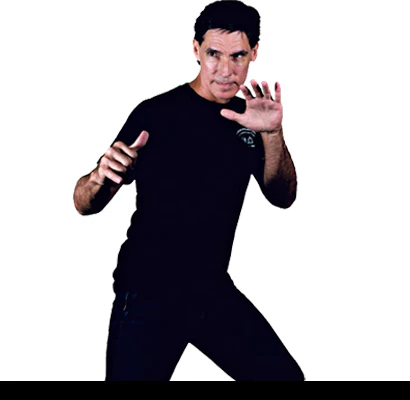Fun Fundamentals
What do all great fighters have in common? Physical fitness is a common trait, but how about technically? What does boxing champ Evander Holyfield have in common with jiu-jitsu champ Rickson Gracie? What secret does sumo grand champion Akebono share with kickboxing champ Maurice Smith? It is the same quality that puts basketball great Michael Jordan and football star John Elway at the top of their respective fields. The secret is strong basics. Basics are the key. When two people compete in any arena, the one with the strongest basics pertaining to the parameters of that event will usually come out on top. If this is true, then we martial artists should spend a large percentage of our time honing those basics. Otherwise we could end up being a person who knows a lot, but can’t apply any of our knowledge during a stressful encounter. The guiding principle in Bruce Lee’s Jeet Kune Do concept is that each individual should strive to become his or her very best at the art of fighting. That means being able to perform your art against a skilled, aggressive, unwilling opponent. Not just looking good when your partner throws a punch out and holds it there for you while you go through a barrage of blows, throws, and locks, but actually being able to hand someone who doesn’t want to be handled. The surest way to accomplish this to work your basics until they are at a high level. Let’s talk about why these fundamentals are so important in fighting. There is a common attitude amongst martial artists (including many JKD practitioners) that whoever knows the most techniques is the best. Let’s think of this logically. Say two men were about to fight. Fighter one knows 500 techniques against a straight punch. He also knows 25 forms which he can perform flawlessly. He has 15 lock flows down pat, and 30 knife disarms that he can perform blindfolded, provided that his training partner feeds him the right “energy”. Fighter number two knows 6 counters for a straight right hand. He doesn’t know any forms or lock flows, and would probably try to run away if someone pulled a knife on him. So these two decide to go at it. Number two feints and fires a right cross with all his power. Number one starts his block? At the moment of impact, that one millisecond in time, does the number of techniques that each person knows determine the effect of the punch? Not in that moment of time. All that really matters is whether the particular defense fighter one puts up will counter that powerful right hand. Now questions of attributes arise. Is the defense powerful? Is it performed efficiently with suitable precision? Is it on time? Was the punch thrown accurately? Was the offense faster than the defense? These are the things that will determine the outcome of the first encounter. I think that it is important to learn as many defenses and attacks as possible so that you have a large pool to draw your basics from. Your basics should be those techniques that work best under pressure against an uncooperative opponent. The best way to find out which basics work for you is to spar in the different ranges. You should have a few core basics in each range against each of the most common attacks. These are the fundamentals that must be drilled and drilled and drilled some more. These must become automatic reactions when the pressure is on, when there is no time to think. Because repetition of the core techniques can become tedious, it is vitally important to develop training methods that keep this sort of repetition enjoyable. This is what we call the “fun fundamentals”. If I just want to work on my lead leg roundhouse kick to the groin, I can practice in the air 1000 time (and never want to do it again!), or I can devise methods of practicing the kick that will keep the training fun. Maybe I’ll do 50 kicks in the air to warm up. The I can do rounds on the focus mitts, kicking shield the heavy bag, and on my partner’s leg. I can do focus mitt rounds where I start with the kick then go into a hand combination. I can start hands and end with the kick. Maybe I block a kick then return the kick, or vice versa. I can start with the kick, move into different ranges, then finish with the kick. After various rounds, I can do some sparring. We can start with kicks only. We can try kicks versus punching, or full sparring. I will see how often and in how many ways I can land that kick. I will analyze the session afterwards, see what I need to work on, and practice those aspects during the next session of fun fundamentals. Train your basics well in am enjoyable manner and they will be there for you when the pressure is on. Play with the different techniques, but always remember to drill your basics first!Leave a comment
Comments will be approved before showing up.
